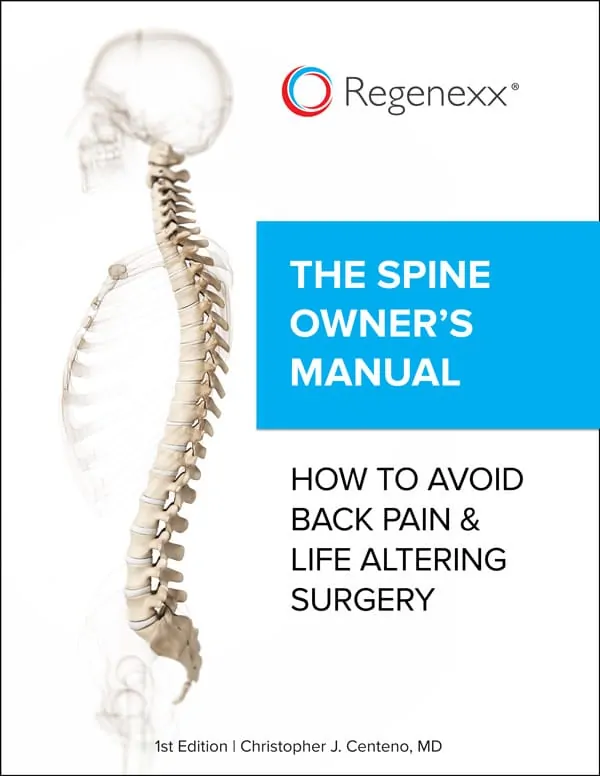This Is SO Wrong: Neck Fusion Gone Bad
I have had about enough of my spine-surgery colleagues who perform a single fusion that doesn’t work and then keep digging the proverbial hole deeper and deeper by performing more fusions. Case in point this morning is a poor middle-aged woman with her whole neck fused! Now she’s miserable and has complications related to the hardware, and, frankly, the level of damage due to the surgery is so epic, I’m not sure how to help.
For Most Patients, Fusion Is More of a Business Plan than an Effective Surgery
Every joint in your spine was built to move. Fusion involves bolting one or more spinal segments together to ensure they don’t move. Most patients don’t understand that these forces must go somewhere, so they end up going above or below the fusion. This is called ASD, which means adjacent segment disease. For more info on this problem, check out my video below:
Why do I call fusion a business plan? We have no high-level research to show it works, and we do know it carries much more significant side effects than other types of surgery. It’s also reimbursed at a much higher rate than routine surgery, hence, the skyrocketing rates of these procedures, despite experts warning that most are not needed.
The Rise of “Maxi-Fusions”
Way back when, surgeons reasoned that performing a single-level fusion was fine, but once you fused more than two segments of the spine, this could cause problems. Somewhere between that fairly reasonable approach and about five years ago, we saw the rise of what I call “maxi-fusions.” This began about the same time many surgeons got involved in owning a piece of their own hardware companies. These new fusion devices were decidedly different. Now instead of one, two, or three levels, we began to see four-, five-, and six-level devices. Small surgical scars began to transform into Grand Canyons of tissue loss in the back and neck. Something was seriously wrong.
My Patient Above Ends Up Getting Her Entire Neck Fused
When I first saw the patient above, I was stunned. Somehow, her entire neck had been fused. Who is this? She is a 51-year-old white female with a very long history of spinal surgery.
Basically, in 2004 and 2005, she had her first C5–6 fusion, which she states failed to relieve her pain. Then she had C4–5 fused and then C3–4. And then a redo C3–4 procedure, and many more surgeries, ultimately culminating in her second-to-last surgery, which was a C2 through T3 fusion. The hardware was then “sticking out” of her skin, and she had a hard time healing, so they performed a surgery where they moved the latissimus dorsi muscle to cover her fusion rod. This, of course, permanently altered the biomechanics of her body, just as each successive fusion had.
So, basically, like many patients, she began getting a single-level fusion, which then caused ASD in other levels, which also needed to be fused. Finally, they performed a “maxi-fusion,” and she’s now in my office because of headaches. More importantly, it doesn’t take a rocket scientist or a brain surgeon to figure out why she has headaches, as there is nothing left that moves other than her upper neck. This is the area where headaches originate, so it’s pretty clear that the fusion is damaging her upper neck, which causes headaches.
Regrettably, adding insult to injury, they placed one of the maxi-fusion rods too high. So the DMX study above shows that the rod bangs into her atlas (*C1 bone) every time she looks up (dashed circle). In fact, it’s already poked a small hole in that bone, leading to a new set of problems. So now she needs yet another surgery to move the misplaced rod!
The upshot? Please don’t let yourself be a victim of the fusion game. First, don’t start playing the game. If you get an opinion that you need a fusion, based on what I’ve seen through the years, there’s about an 80–90% chance your problem can be treated without fusion. If you have a fusion and they’re telling you that you need another, again, you likely don’t. More importantly, if they want to fuse more than one or two levels, run! This is almost never warranted, and you don’t want to end up like this poor woman!
Download your copy of The Spine Owner’s Manual to learn more about how to avoid pain and surgery.

NOTE: This blog post provides general information to help the reader better understand regenerative medicine, musculoskeletal health, and related subjects. All content provided in this blog, website, or any linked materials, including text, graphics, images, patient profiles, outcomes, and information, are not intended and should not be considered or used as a substitute for medical advice, diagnosis, or treatment. Please always consult with a professional and certified healthcare provider to discuss if a treatment is right for you.

